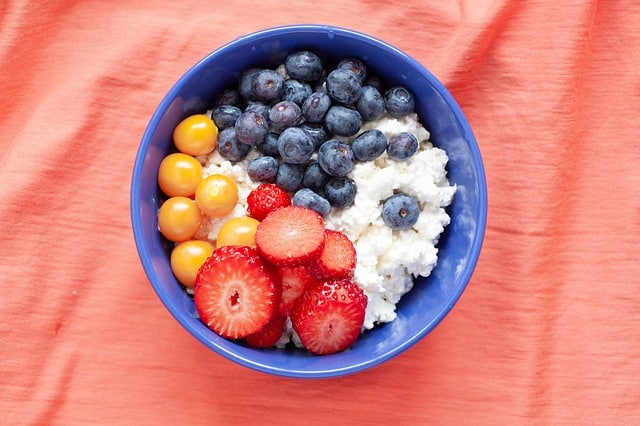
One of the challenges of living with diabetes is daily diet. Being a disease that causes insulin deficiency, most staple foods in the US will spike the blood sugar even more than usual. As a result, such carbs-filled foods like white rice and potatoes and breads are often off-limits, not to mention pastries and candies, which are basically adding sugar directly into your blood.
Because carbs and sugars are off-limits, choosing snacks may present to those with diabetes with a particular challenge. A walk through the snacks aisle will make it abundant that most of our beloved snacks are carbs-heavy with flavours that always involve one form or another of sugar.
Contents
Although there are such healthy selections as yogurts and nuts, they are not necessarily everybody kind of snack. And cheese tend to have high sodium contents. In our other post, we have already covered cream cheese as a potential safe condiment for diabetics.
But cream cheese does not go with everything and what it does pair well with tend to be complex carbohydrates such as crackers and bagels that spike your blood sugar level.
The good news is, there is another kind of creamy, spreadable cheese that goes well with a lot of healthy foods such as vegetables and fruits. In this article, we are taking a look at one of our culinary favourites—cottage cheese. The million-dollar question is, is cottage cheese safe to eat for diabetics?
What is cottage cheese?
Cottage cheese is a creamy, light-flavoured cheese with a snow white colour. Depending on where you buy this product, some brands may have cottage cheese that have separate lumps in a thick white liquid, while others may have varieties that look more like the Italian ricotta cheese. This cheese is a light cheese that does not require culturing or aging. According to a recipe found on The Food Network, to make cottage cheese only requires 4 ingredients: skim milk, white vinegar, kosher salt, and heavy cream.
The whole process is extremely simple: First, you put the skim milk in a saucepan, bring it up to temperature of about 120 degrees Fahrenheit, which is just about simmering, then add the vinegar while constantly stirring. Keep cooking for another couple of minutes, until the cheese curds separate from the whey, which is a milky liquid.
Let the mixture sit in room temperature for half an hour, and you should see a wet lump of curds in opaque white liquid. Once you strain the whole thing with a cheese cloth, until you can’t squeeze out any more liquids, you have just made cottage cheese.
The last ingredient, heavy cream, may concern you because it’s extremely high in saturated fat, which is a sworn enemy of heart disease, which is often accompanying diabetes. But not to worry. From the post on The Food Network, it looks like their version of the cottage cheese is served with heavy cream as a condiment after the cheese itself was finished.
In that case, the solution is simple: Don’t add the heavy cream when serving. Let’s face it, since the kosher salt is added to the cheese to extract flavour, it brings out the natural subtle sweetness in dairies. Even without that extra heavy cream to stab at your heart, it’s delicious enough.
So, it looks like cottage cheese is one of those cheeses that are made with simple and few ingredients. We might even consider it a “clean” cheese because it contains no extra sugar and is low in fat because it was made from skim milk. But just because cottage cheese is not horrible to our health in general, it doesn’t mean it’s compatible with diabetes. So, how do cottage cheese and diabetes look together?
What’s inside cottage cheese?

We mean the nutritional contents of cottage cheese. According to the FoodCentral Database by the US Department of Agriculture, in a 100 grams of cottage cheese, there is only 1.7 grams of saturated fat (about 8% of daily value), 2.7 grams of sugar, and about 3.4 grams of carbs, and 11 grams of protein, making cottage cheese one of the healthier choices compared to other dairy products, such as cheddar and cream.
The data shown above are for cottage cheese made from 2% milk, but if you buy or make the one made with skim milk with no added cream, you will get even less saturated fat, which in cottage cheese means milk fat. Without the usual saturated fat and sugars present in full-fat milk, cottage cheese retains most of the minerals you may find in dairies. All of these seem to point cottage cheese in the direction of an unexpected healthy snack option.
Cottage cheese’s glycemic index (GI) adds a bonus point to its healthiness. According to a calculation done for a study, cottage cheese has a GI of about 10, meaning that it has very little effect on raising your blood sugar. But being nutritious and healthier than other dairies don’t necessarily mean it’s good for the health of those with diabetes.
How healthy is cottage cheese for diabetics?
In short, surprisingly healthy. Don’t get us wrong, cottage cheese is by no means a superfood with a bunch of added benefits specifically for diabetes, since it’s made from milk, and milk is not usually on the diet list of diabetics.
That said, skim milk is a better option for those with diabetes to help managing weight, according to a dietitian with sharecare.com. Since cottage cheese is made from skim milk, at least on the dairy front it is not far-fetched to suppose it to be a safer alternative to regular milk.
Also, you’ll notice that in the process of making cottage cheese, the main ingredient that allowed the milk to curdle up into cheese is vinegar. In a well-researched article published on Diabetes Action, Dr. Bradley showcased some evidence on the benefits of vinegar for lowering blood sugar levels after eating foods with a high GI.
As we have mentioned, cottage cheese itself has a low GI. Because of the deficiency in insulin activities, people with diabetes already have an elevated blood sugar at baseline. It is conceivable that cottage cheese not only doesn’t raise the blood sugar level, it may help manage it because of the presence of vinegar in its ingredients.
That said, the evidence on the effectiveness of vinegar in managing blood sugar is mixed, so it’s better not to rely on it. However, that is not to say that incorporating cottage cheese into your diet as a snack is not a good idea. In fact, despite the lack of evidence on direct impact on diabetes, adding some cottage cheese snacks in your day might be beneficial after all, but in an indirect manner.
Indeed, in a critical review conducted in 2004, scientists found that by intaking high-protein foods, our body takes more energy to digest the food—a process called thermogenesis. Through this mechanism, diets higher in protein are more conducive to weight loss.
If you are going to snack anyway, why not opt for a snack that will help you lose some weight? As research shows, losing weight will help improve all aspects of health if you have also diabetes, including blood sugar, cholesterol, and blood pressure.
Another incorporating cottage cheese as part of your snacks is through multiple snacking sessions throughout the day. A study done in 2010 showed that higher frequency of small-portion snacking of high-protein foods helped to achieve a sense of satiety and controlled appetite in overweight and obese people.
It doesn’t take a carefully controlled scientific study to tell us that greater appetite and a feeling of being left wanting more definitely contributes to overeating, thus by extension, gaining weight and elevated blood sugar. But it did take a research study to show us why.
In this case, it seems that not enough protein and big meals are the problem, at least partially. By incorporating cottage cheese, spread out as several snacking occasions, you might get a better grip on appetite and weight control.
All that being said, it is not for nothing that cheese is generally not recommended to eat in large amounts. So before you substitute too much of your diet with cottage cheese, consult your doctor and get a quote on how much you should eat, if you’re allowed to do so at all.
If you do include cottage cheese in your diet, here are some very healthy things you could do with it.
Conclusion: Yummy recommendations

If you buy cottage cheese or make your own, you can feel free to break down the bigger curds and mix it in with the milky liquid that was the residue from the cheese-making process.
The creamy result can be an excellent companion for dipping vegetables, as garnish on your meat dishes, or as the flavorful base of your fruit cups. To add extra protein, you can even mix cottage cheese with yogurt in your healthy parfait. The gist is, have a taste of cottage cheese by itself, and you’ll likely find its mild yet rich refreshing flavor a perfect match for many snacking favorites (nuts, even?).





